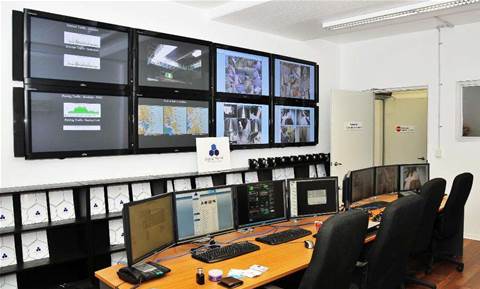Digital Sense started to look for ways to maximise its available floor space. It started by re-designing the traditional raised floor.
“We were getting a lot of pressure from customers with mainframes or SANs to put in a false floor [rather than put racks straight onto concrete],” said Tran.
“We’ve put in a false floor that is very unusual – it’s lower and looks like it has a very small cooling capacity, but it actually has five or six times the cooling capacity of most other data centres and it’s also very strong.”
The company also uses an overhead high-density supplemental cooling system in addition to the traditional computer room air conditioning (CRAC) technology, according to Tran.
“Through that we’ve been able to cut the floor space that cooling units take up by up to tenfold,” said Tran.
“The big advantage [of supplemental units] is they are overhead so they don’t take up floor space,” said Peter Spiteri, Director of Marketing at Emerson Network Power Australia.
“It’s sensible use of vertical and horizontal real estate space. Traditional CRAC cooling units take the floor space of three to four racks, which is what the co-location datacentre makes its money from,” said Spiteri.
Tran likens Digital Sense’s high-density data centre design to that of a residential apartment block.
“It’s like high-density living for blade servers,” he said.
Spiteri said Emerson has also been able to take away some key learnings from the design and tour of data centres in the United States.
“We were exhausted by the process but some of the approaches Digital Sense came up with we’re now feeding back into future equipment designs,” said Spiteri.
“It’s been a symbiotic approach to the data centre design.”
The racks used by Digital Sense are an Emerson design made of extruded aluminium and feature a highly perforated door – rather than being ‘contained’. This is said to have been done to enable cool air to pass through the rack more efficiently and to allow easier access to equipment.
Power management rails are also installed in each rack to check the power draw at each rack unit.
“It’s all IP connected and an alarm is triggered when a piece of equipment hits a certain percentage of its load,” said Spiteri.
Inside the Digital Sense high-density data centre
By
Ry Crozier
on Jan 19, 2009 8:25AM

Page 2 of 2 | Single page
Got a news tip for our journalists? Share it with us anonymously here.
Partner Content
.jpg&h=142&w=230&c=1&s=1)
New Microsoft CSP rules? Here’s how MSPs can stay ahead with Ingram Micro

Shared Intelligence is the Real Competitive Edge Partners Enjoy with Crayon

MSPs with a robust data protection strategy will achieve market success
_(21).jpg&h=142&w=230&c=1&s=1)
Empowering Sustainability: Schneider Electric's Dedication to Powering Customer Success

Beyond the box: How Crayon Is Redefining Distribution for the Next Era







.jpg&w=100&c=1&s=0)










